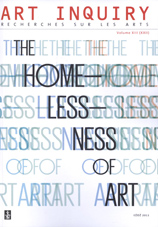The “homelessness” of the Catholic Church and the sacral buildings in Andean Peru: Juli, Rondocán, Aranhuay and Chaca
The “homelessness” of the Catholic Church and the sacral buildings in Andean Peru: Juli, Rondocán, Aranhuay and Chaca
Author(s): Ewa Kubiak, Joanna Pietraszczyk-SękowskaSubject(s): Architecture
Published by: Łódzkie Towarzystwo Naukowe
Keywords: Andean churches; the catholic church of Peru; colonial art; armed conflict in Peru; provincial architecture
Summary/Abstract: Despite the common belief that Spanish-speaking South America has been dominated by Catholicism for centuries, the current situation of that faith in the countries of the region is increasingly difficult. The position of the Catholic Church in the area of Andean Peru, famous for marvellous monuments of sacral art and colourful processions, is currently undergoing distinct changes. The problem of the declining number of Catholic priests is particularly evident in the mountain villages, situated far from big administration centres and inhabited by communities of Indian origin. In the face of an insufficient number of priests in the provinces, those villages are the first to be left without ministry. The same happens to the local churches, often built as early as in the 17th and 18th centuries, many of which are currently closed. The reasons for the “abandoning” of these provincial churches by priests and, in many cases, by local communities are different depending on the region. We will consider here the cases of Juli, ondocán, Aranhuay and Chaca. Our analysis includes a detailed description of both the former greatness of the discussed buildings (which aims at familiarizing the reader with the period when the churches were built and functioned as sacral buildings) and the reasons for their “collapse” as well as their current state. As the examples show, the present situation of the Catholic churches in the Peruvian provinces is the outcome of many factors – e.g. the chronic shortage of the clergy in the rural areas, the conversion of a significant number of local people to the Protestant faith, the lack of state care over monuments, and, in certain regions, also the plundering and devastation during the war. In each of the described cases, the current state of the church illustrates a drastic change in its status – from its colonial splendour, when its presence and richness guaranteed respect and devotion to the Catholic Church by evangelized natives and colonizers coming to Latin America from the Old Continent, to the state of abandonment, destruction and closure. This change reflects not only the current situation of sacral art, but, first of all, the situation of the Roman Catholic Church. The example of each church building illustrates the same problem: after the “disappearance” of faith, they have little chance of surviving, even in the form of monuments, and they turn into the symbols of homelessness – of the buildings, the artefacts, of the faithful and of religion.
Journal: Art Inquiry
- Issue Year: 2011
- Issue No: 13
- Page Range: 159-181
- Page Count: 23
- Language: English

